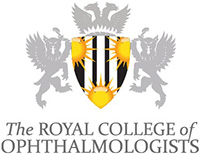| TITLE | DELIVER INFORMATION |
|---|
Code |
C3 |
Learning Outcome |
- Deliver information clearly to a patient and, where appropriate, their carers; this must include the explanation of a diagnosis and its treatment options.
- Be sensitive to how information is given and how it is being received.
- Allow a patient to determine how much information they want and how quickly it should be shared.
- Provide information using appropriate terms and plain language, being sensitive to issues of ethnic, gender and religious diversity.
|
Assessment |
MSF Part 2 FRCOphth
|
Assessor |
Feedback likely from: medical staff, Allied Health Professional (nurse, optometrist, orthoptists) |
Target Year of Achievement |
Year 3 (annual review) |
Related Learning Outcomes |
CA1
|
Overview |
- Consider how you can deliver information without confusing the patient or being insensitive.
- Be aware of your communication style. Never talk down to a patient but be aware that you have more knowledge than the patient may need.
- View the problem from the patient’s perspective and be aware of the impact your information giving is having. For example, something that seems trivial to you may not be so to the patient.
- Be prepared to justify the treatment you recommend and handle challenging questions.
- Advise the patient of any period of recovery and/or activity restrictions.
- Discuss and guide the patient on any rehabilitation needs.
- Consider the value of a follow-up letter, email or phone-call to the patient.
- Continuously develop your skills further; reflect on what could have gone better in an interaction, ask a colleague to observe you and feedback, collect patient feedback, consider courses.
|
Resources |
View Resources |
